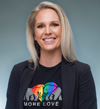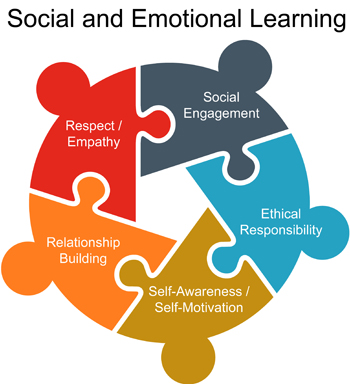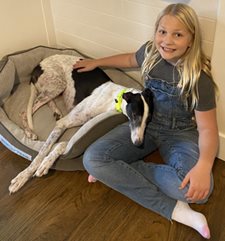November 17, 2020
 This is the third in a series of guest blogs by the 2020-21 Michigan Regional Teachers of the Year. Shantel VanderGalien is an eighth and ninth grade English teacher at Wyoming Junior High in Wyoming Public Schools.
This is the third in a series of guest blogs by the 2020-21 Michigan Regional Teachers of the Year. Shantel VanderGalien is an eighth and ninth grade English teacher at Wyoming Junior High in Wyoming Public Schools.
After COVID-19 shut down schools in March, I had to sit down, re-evaluate my skills as an educator and read what was best practice in this new normal. And by new normal, I mean things changing constantly. Every. Single. Day.
One of the best resources I found was the
Marshall Memo. Kim Marshall, a former educator, designs a weekly publication where he features five to 10 articles, based on current research and best practice, that have the greatest potential to improve teaching, leadership and learning. The best part is it only takes about 20 minutes to read!
From his memos, I gained valuable insights into how I could try to create the safest spaces, both physically and virtually, for my students during this time. The best part is you can search his Memo archives by topic. That’s where I began to go back and read more about social-emotional learning and how I could grow my practice.

From an archived Memo, I read that “only half of American children are hopeful – that is, believe their future will be better than their present and think they have the power to shape a better future.” That statistic is startling, but as I continued to read, I found out that “after controlling for other variables (previous grades, IQ, psychological status), researchers have found that hope boosts a student’s school achievement by 12 percent.” You can read more about the experiment that followed and the findings from the article,
“Making Hope Happen in the Classroom” by Shane Lopez.
So how could I, as a teacher, help my students create hope? Because if I could help my students become more hopeful, the studies show they will have better attendance and will be more engaged at school.
I found that something I was currently doing with my students was best practice: have students create goals that matter to them. I passed out notecards to each of my students and asked them to write down one goal they had for themselves this year. Then I asked them to write down a long-term goal they had for after high school. Now that I know their goals, I can help connect what we are learning in class to how they might apply those skills towards their future goals.
And if we have goals for students in our classes, how can we get them to buy into that goal? How is it relevant to them? We need to teach students how to put hope into action.
But it isn’t just about hope. We also can teach our students about gratitude. I have a launch for my students at the end of the hour at least once a month where I model gratitude practices and have them engage in those gratitude practices. A launch is part of the practices from Capturing Kids’ Hearts, where you send your students off with something positive and/or meaningful. It helps build relationships with students and puts them in a positive spot for the next class or the next part of their day. Sometimes during our launch, they share 10 things they are grateful for that day. Other times we write a note of gratitude to a family member or a friend. Recently, we wrote our gratitude list and then put it into an envelope that we addressed to ourselves so we could practice how to send a professional letter.
You have power and agency. Encourage your district to take a wide approach to implementing strategies for social-emotional learning. I was happy to hear that my own district, thanks to Steelcase Foundation trustees, was awarded a grant to participate in the Yale Center of Emotional Intelligence RULER Project.
RULER is an acronym for the five skills of emotional intelligence: Recognizing, Understanding, Labeling, Expressing, Regulating. The project “seeks to infuse the principles of emotional intelligence into the immune system of pre-K to 12 schools, informing how leaders lead, teachers teach, students learn, and families support students.”
Knowing that we all share the same goal of helping our students master standards in various content areas while also experiencing happiness and emotional stability, what small changes can you make in your practice to ensure each student who walks through your physical door or your virtual one has the tools they need to be emotionally successful?
This is the question I will be holding onto as we continue to lift each other up this year. Sending you all love, light, and hope.
 My name is Shantel VanderGalien, and I am an eighth and ninth grade English teacher at Wyoming Junior High. This school year marks the beginning of my 17th year in teaching for Wyoming, a district just outside of Grand Rapids. I am the 2020-21 Region 3 Teacher of the Year, representing teachers in schools in the West Michigan area. Originally, I am from Traverse City, MI, but moved down to Grand Rapids to attend Calvin College (now Calvin University). Additionally, I am a National Board Certified teacher.
My family, along with our new rescue greyhound Quinn, live in the Belmont/Rockford area, just north of Grand Rapids. I find joy in being outside, walking, exercising, cooking and watching my daughter play soccer.
My name is Shantel VanderGalien, and I am an eighth and ninth grade English teacher at Wyoming Junior High. This school year marks the beginning of my 17th year in teaching for Wyoming, a district just outside of Grand Rapids. I am the 2020-21 Region 3 Teacher of the Year, representing teachers in schools in the West Michigan area. Originally, I am from Traverse City, MI, but moved down to Grand Rapids to attend Calvin College (now Calvin University). Additionally, I am a National Board Certified teacher.
My family, along with our new rescue greyhound Quinn, live in the Belmont/Rockford area, just north of Grand Rapids. I find joy in being outside, walking, exercising, cooking and watching my daughter play soccer.